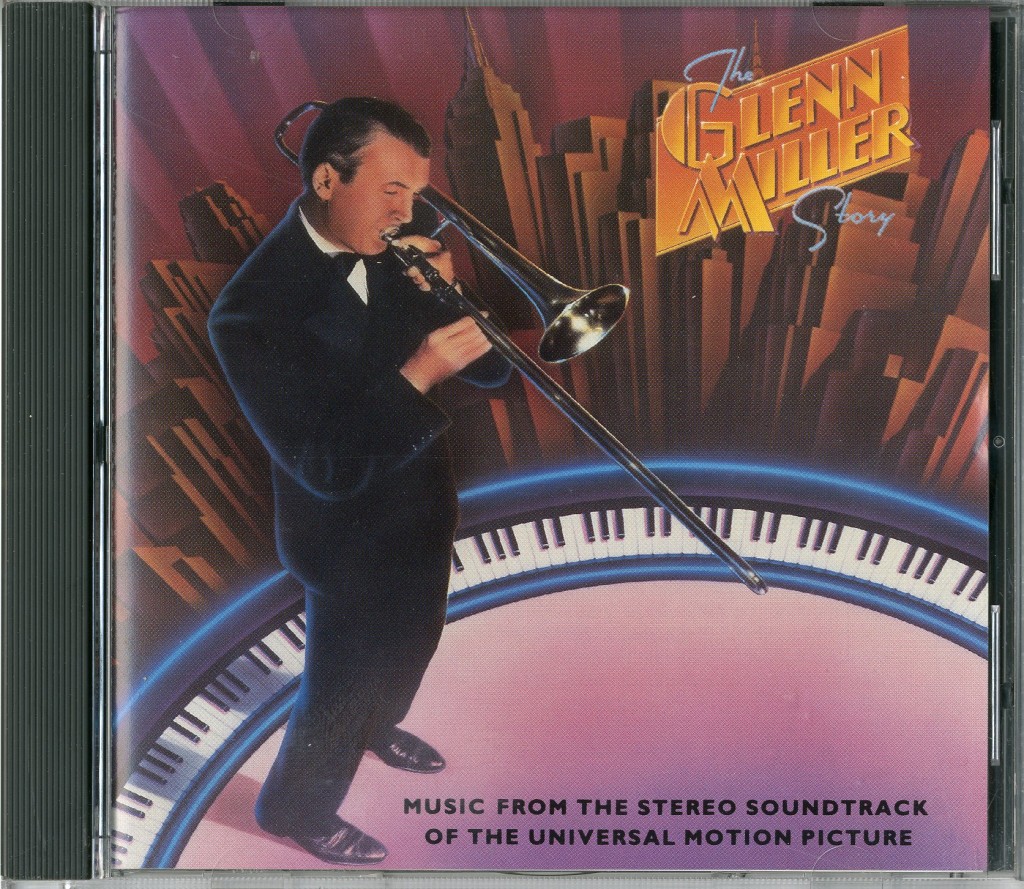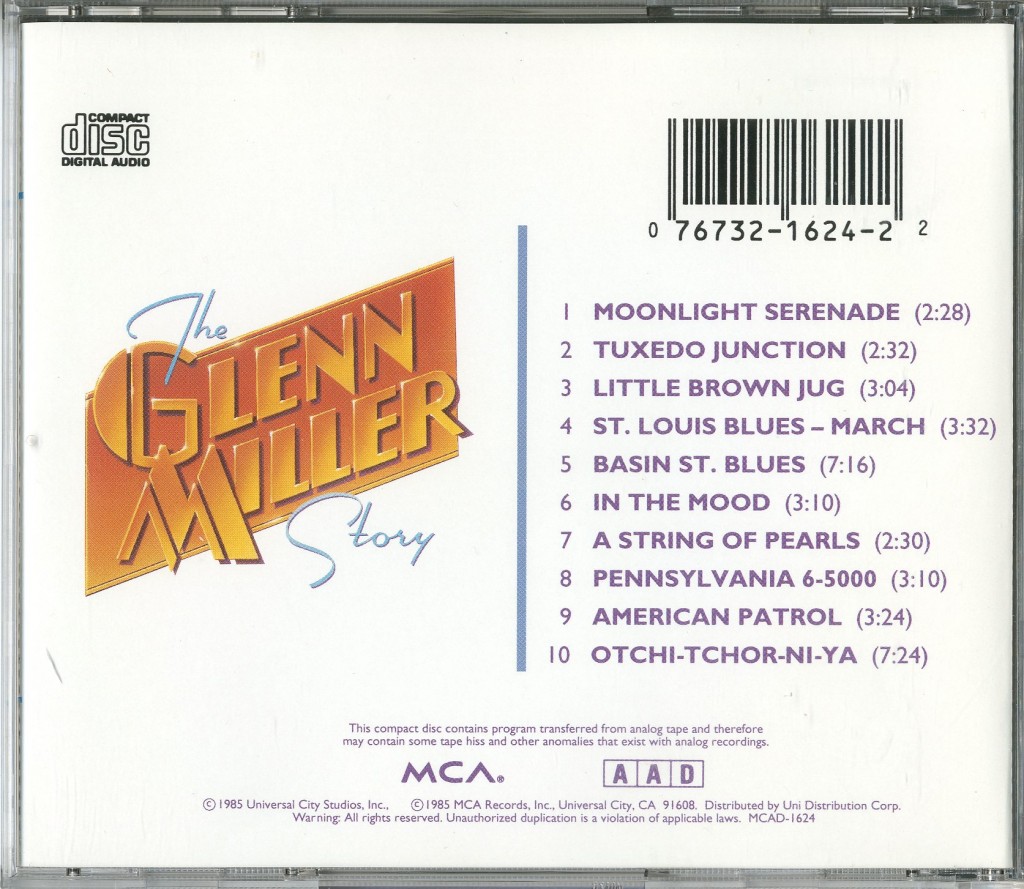Big band swing music is the focus of The Glenn Miller Story soundtrack. Because Miller’s original recordings were not made utilizing stereo it was decided by the producers to recreate them, so Universal’s music men, Joseph Gershenson and Henry Mancini, transposed Glenn Miller’s music, including solos and ad-libs. They then re-recorded the music using a new orchestra which featured no less than seven original members of Miller’s band. The result is an album which recreates Glenn Miller’s music while adding the aural dimension of stereo recording. It’s a fabulous album!
As James Stewart (who portrays Miller in the movie) mentions in the liner notes, “‘Moonlight Serenade’ perhaps accompanies more marriage proposals and declarations of love than Wagner’s ‘Wedding March.'” Miller’s signature tune leads off the musical lineup of this CD, which encompasses ten of the two dozen or so musical numbers sampled in the film. Perhaps someday a truly complete soundtrack will be made available, but until that time, this one will do quite nicely.
Glenn Miller was a master arranger, as “Moonlight Serenade” proves, with its tight harmonies, woodwind and brass blends, smooth clarinet solo and dramatic pause in the middle of the song. Friskier highlights are found with “Little Brown Jug,” which jazzes up the old standard with flaring trumpets, jumping percussion and solos by alto sax, trumpet and trombone; the scale-climbing piece “A String of Pearls,” with its beautifully tricky, key-jumping trumpet solo; “St. Louis Blues – March,” a jazzy track dominated by drums and trumpet and odd, minor keys; and especially another signature Miller piece, “In the Mood.” Few tunes have ever proven to be as timelessly popular as Miller’s reshaped version of Joe Garland’s music. Virtually every recording of it since then has taken Miller’s upbeat approach and the movies which have utilized this rousing music are innumerable. The final refrains, in which two gradually fade before the final one blasts to glory, are musical Heaven.
Period influences are to be found in two standards: “Tuxedo Junction,” which recalls the railroads of the era with its harmonic “doo-wop” low brass line and soft, rhythmic drum keeping perfect time, and “Pennsylvania 6-5000,” with its ringing telephone bells and chorus announcing the title telephone exchange, a system that probably means nothing to anyone under the age of 40.
Louis Armstrong and his All-Stars make lengthy appearances in two songs: the New Orleans-flavored “Basin Street Blues,” and the traditional Russian “Otchi-Tchor-Ni-Ya.” These tracks offer aural variation, featuring Satchmo’s raspy vocals, piano solos and looser orchestrations than Miller’s band. This is jazz!
I’ve saved my favorite track for last. “American Patrol” is, like “In the Mood,” an upbeat song that intensifies as it builds. The reason it is my favorite is because I used to play it when I played cornet in the Gower School band. When we were assigned this song, I listened to the Glenn Miller recording and patterned my own playing after it. There is no doubt that it made me a better cornetist. Every time I hear “American Patrol” I am reminded of those days and the thrill that I felt when playing music in public. I can think of few other musical compositions that I enjoyed playing more; it is one of my favorite pieces of music. I hope you enjoy it as well. (9:4).



Love the blog